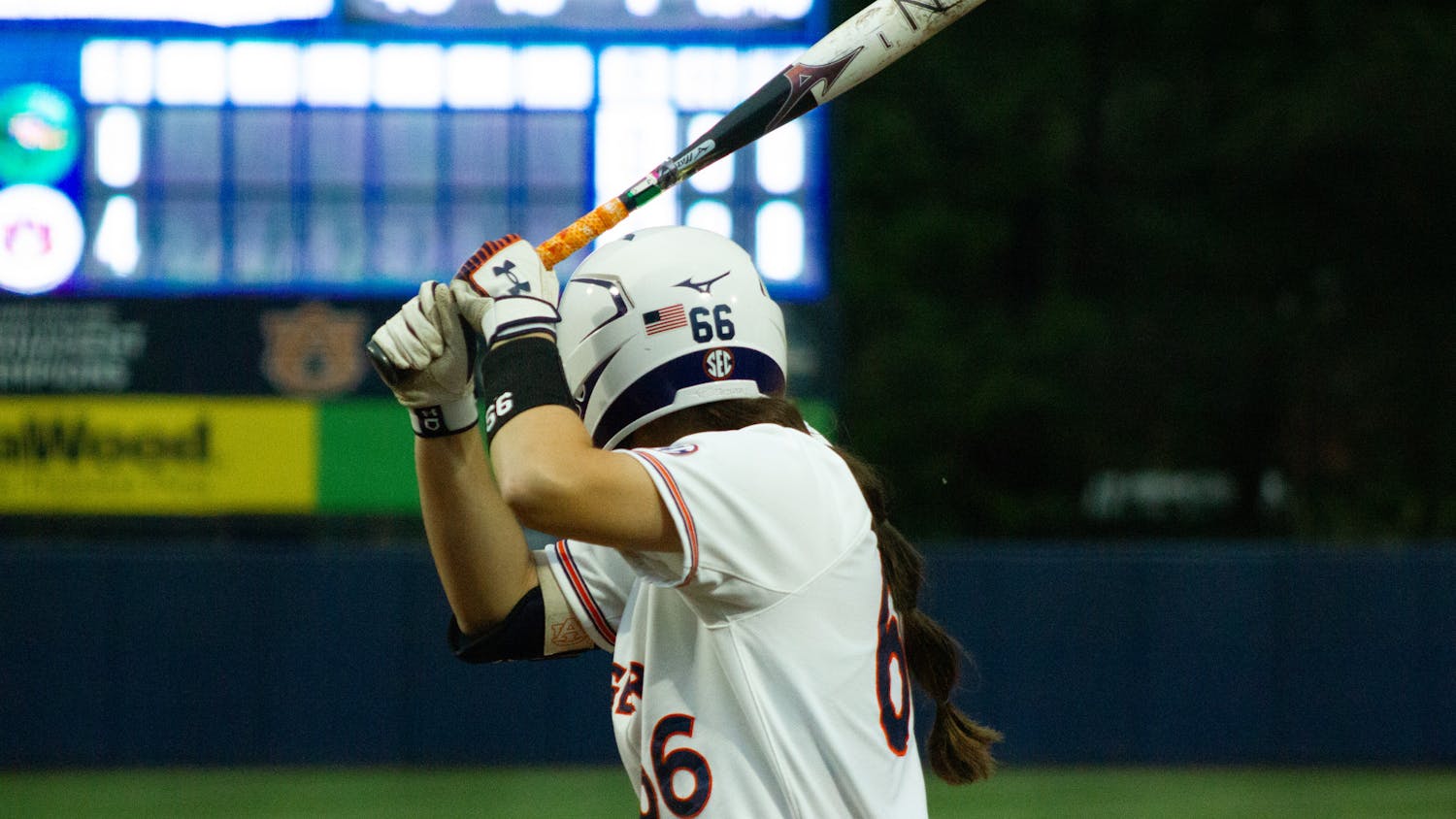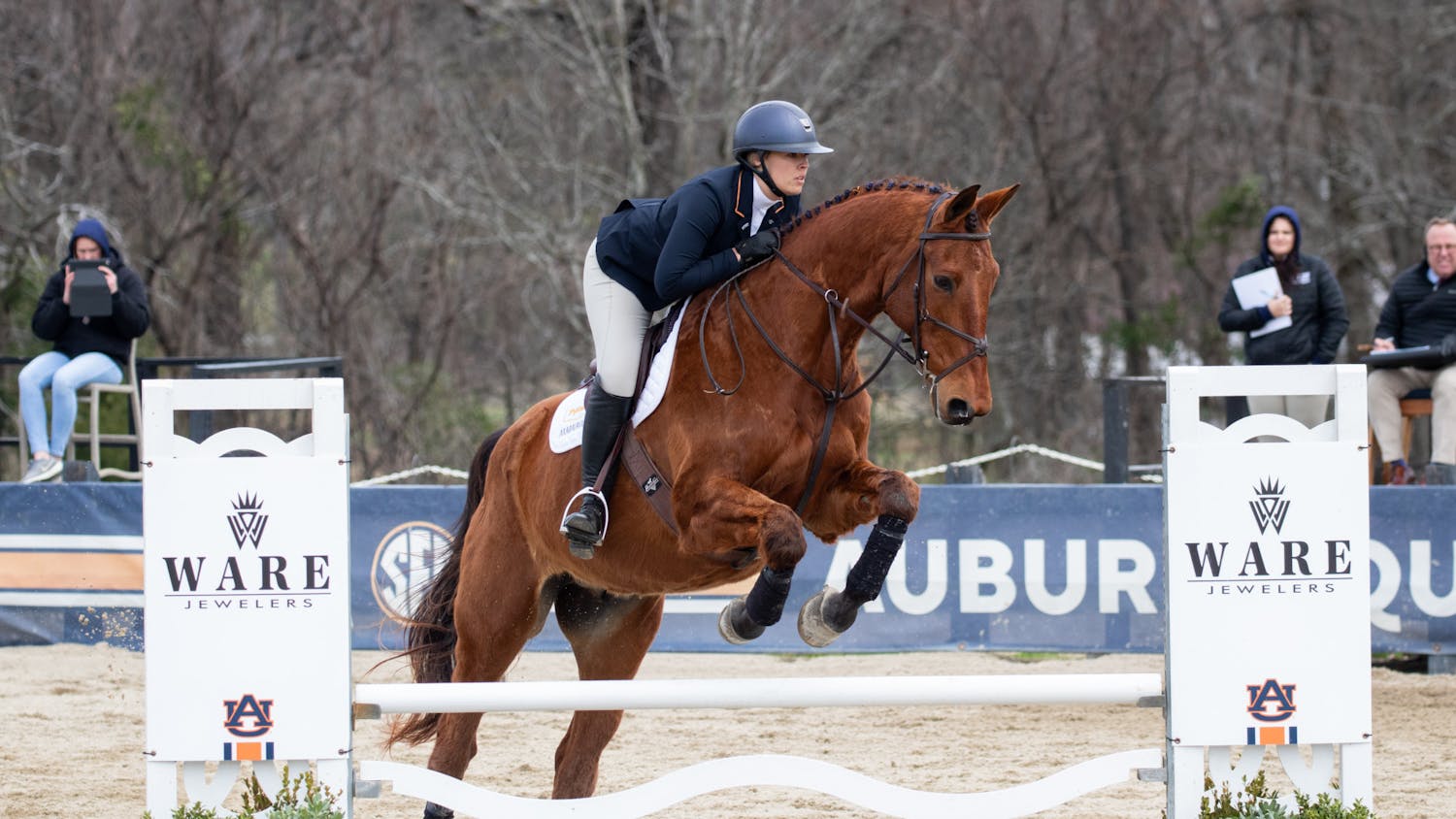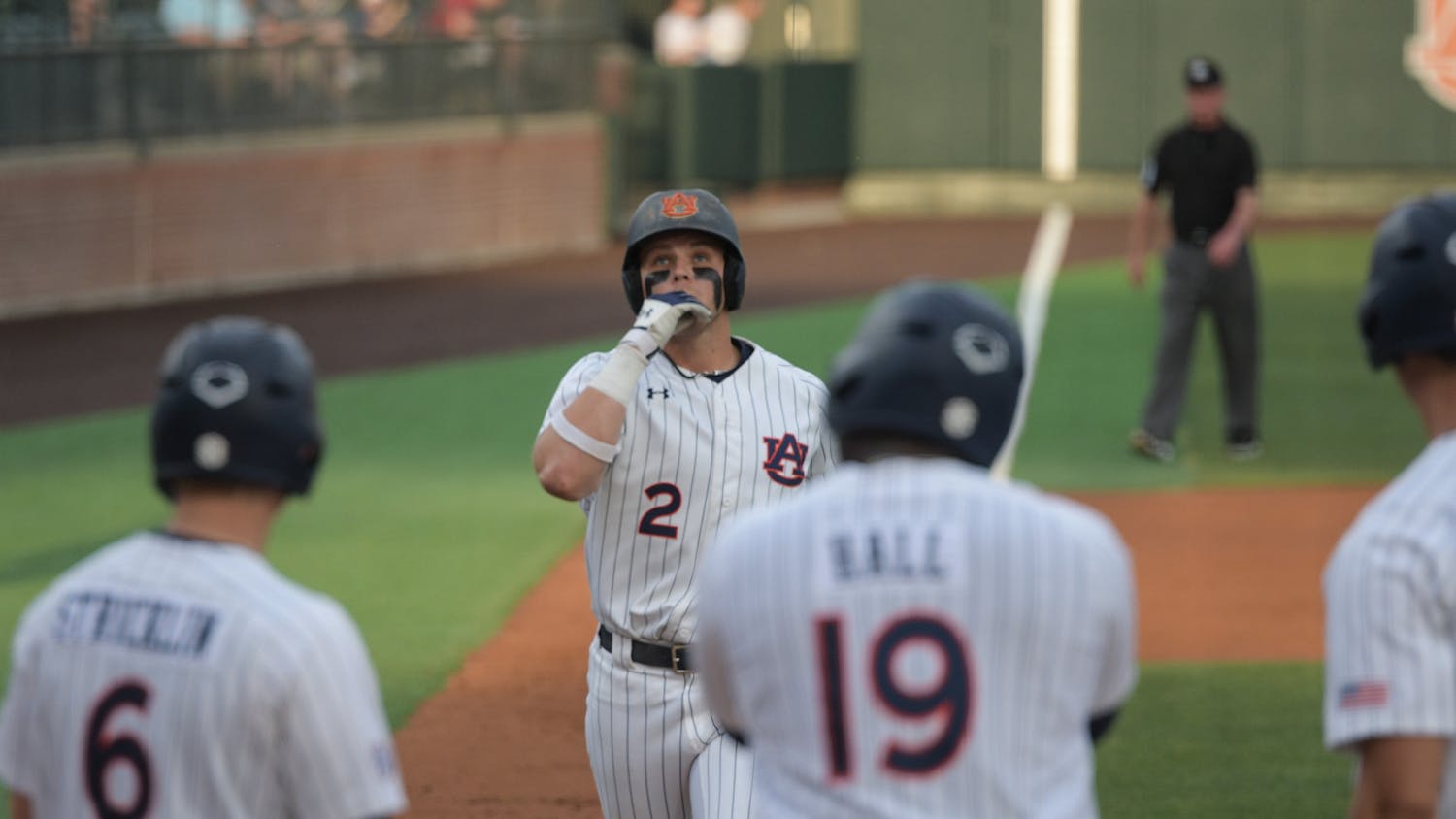Jubilant conversation echoes off the walls as colleagues gather in the downstairs workshop of Wiggins Hall. They, a team comprised of about 40 students, have just dispersed following a celebration recognizing their achievement in Auburn history.
SpaceX, Bosch, Boeing and Lockheed Martin are just a few names you can find on the carbon fiber chassis of the Auburn Formula Society of Automotive Engineers (SAE) team’s first place car. It’s the first time, since the group’s foundation in 1996, the team has ever placed first in competition.
“We were sitting in the paddock calculating best and worst case scenarios in where we were placing,” said Nick Boehm, a junior in finance that serves as a driver and business director for the team. “We calculated down to like two tenths of a point and it ended up being half a point out of 1000 (to win the competition).”
Each competition has four events in which students are tested; acceleration, skidpad, autocross and endurance. Acceleration consists of 0 to 75 meter sprint. Skidpad tests the sideways grip of the car through two right circles and two left circles. Autocross is a single timed lap from a still start. Endurance is a 20 lap event that includes a driver change midway through the contest.
The competition also includes static events; a business presentation, a cost report and fuel efficiency which is tested in the endurance round. The teams simulate selling the car to amateur drivers during the business presentation. The cost report measures every nut and bolt of the car and is put into a report consisting of about 400-500 pages. Fuel efficiency is scored how much fuel is used and on engine displacement.
Auburn took first place in a field of 80 collegiate entries at Formula SAE Lincoln, a national competition held annually in Lincoln, Nebraska.
However that first place victory was short-lived for Auburn’s formula team as the design for next season’s car began the day after the final summer competition, Germany, ends.
“We design in the fall and then we have a design freeze in October, then we start manufacturing and building the car throughout the winter,” Boehm said. “We have it done by late February and then we test and tune it and we’re competition ready by May - that’s when we have our first competition.”
The SAE team’s season typically consists of two competitions. This year, for the second time in program history, they competed in three. The first, Formula SAE Michigan, is where the team placed 15th because of inclement weather during the endurance round. The second, Lincoln, is where a first place finish made team history. The third, Formula Student Germany, wrapped up Aug. 14.
The amount of members attending events varies. Twenty-two frequented the Lincoln competition and 34 members attended the Michigan competition. Auburn’s trip to the Germany competition consists of a team of 16, since members pay for the trip out of pocket. The Tigers placed 22nd out of 111 teams in Germany this year, the highest it ever has.
“Generally the main designers go to competition,” said Payson Williams, a senior in mechanical engineering and the group’s project manager. “We want to keep it small. Germany is the best in the world for an SAE competition.”
The car is built almost entirely in the team’s shop on campus. About 80 percent of the car is built in the machine shop which remains open to the team round-the-clock.
“In the winter, machines are running almost constantly - we’re really fortunate to have our own machine shop,” Boehm said. “Some teams have shop hours where they can only work 8 -5 or 8-8 and I don’t know how those teams get by. This [shop] is full everyday all day until the car is finished.”
The chassis, comprised of mostly carbon fiber, is laid out in the composite room. Bigger pieces like the rear wing and the monocoque are designed and sent off to GKN Aerospace. GKN uses their autoclave to create the parts because the on campus machines aren’t big enough.
Parts take several months to complete. For example, the monocoque from start to finish is uncertain because the team must design it, make the molds and send it to GKN to get cured.
The cars are created in Computer-Aided Design (CAD). Different programs are used to test various aspects of the car. The team can test different parts that may fail if too much force is applied. In CAD, they can apply forces in certain ways to find out how structurally sound the car is entirely on computers. Most of the testing is done in computer simulation before the team begins to make the parts.
The designs and simulation data that the team uses to build the car are used in design presentations at competitions. They are judged on how well they went from starting testing, building it and implementing the design.
That same design goes into the business presentation, headed by Boehm and the team’s business division. Like their car, the Formula SAE team is comprised of many different parts - not just those majoring in engineering.
“It’s not just mechanical engineering, it’s not just electrical engineering - we welcome anyone from any major..,” Boehm said. “We had an english major just graduate. We have a couple marketing majors, a supply chain management major, aerospace engineers.. we look for people who just love cars and really want to help make this the best car that it can be.”
Auburn’s program is one of few that is not solely focused on senior design, so incoming freshman and new team members can learn through their peers. The program’s inclusiveness gives them an edge over the competition, Boehm noted.
Teammates aren’t limited to having one role on the squad, either. Boehm doubles as head of the business team and a driver. In December, evaluations begin so that drivers can earn more seat time. The stage is also used for drivers to give designers feedback on the car’s feel and limits. Evaluations continue in the spring semester where the team chooses the four fastest to drive in competitions. Once chosen, drivers are broken off into two competition events; autocross and endurance or skidpad and acceleration.
“Nothing handles like it, nothing accelerates like it,” said Boehm. “It does 0 to 60 in 2.7 seconds. It’s faster than almost any road car and it grips more than almost any road car.”
For now, designing and besting a first place car isn’t the only thing the team has set its sights on. The biggest thing, according to Williams, is recruiting new designers.
“The design process with the new leadership is taking all the freshman who have never CAD-ed anything into a computer, who have never really built any intricate parts, and actually getting them to make a design and have it work,” Williams said. “You’re going to have to learn about certain parts. This is a team that works 365 days a year, there’s not a lot of holidays a lot of us do stay behind at Christmas, Thanksgiving, Spring Break to get the car done on time. Getting people who are committed is a challenge but you can see who’s really committed as soon as you meet them.”
Some members spend 40 hours a week in the shop, some five. The team asks for an individual’s investment of time in making their design work - not just for a group fee. Alumni of the Formula SAE team have landed internships and jobs with major businesses, including the names found canvasing the body of the first place car.
On weekends you can find members in the shop that break from their co-ops in nearby cities just to work on the car.
“We’ve got a lot of dedicated team members.. people work in Birmingham and come in over the weekend, people work in Atlanta and come in over the weekend and stay Friday through Sunday night and then drive back for work,” said Williams. “There’s a lot of passion on the team. That’s the biggest thing I could be proud of is that these guys are really people who are going to be leading the next big engineering firm, the next big thing, because they’re passionate.”
The hype of a first place car no longer fills the workshop. Classes have returned and pressure of manufacturing another champion auto has set in, but it has not dimmed the passion of the Formula SAE team. A new year brings new opportunities and another chance to make school history.
Students who participated in the Formula SAE Lincoln event include:
Nathan Baker
Michael Bassie
Nick Boehm
Drew Campbell
Xiang Chen
Stuart Coats
Trey Danks
Jeff Dejax
Davis Edwards
Bryan Golden
Steven Hough
Daniel Maddux
Andrew McCooey
Preston McGurn
Michael Moritz
Isabel Perry
Ryan Reeves
Mark Stepnowski
Gerrett Vickery
Hunter Wilkinson
Payson Williams
Do you like this story? The Plainsman doesn't accept money from tuition or student fees, and we don't charge a subscription fee. But you can donate to support The Plainsman.



